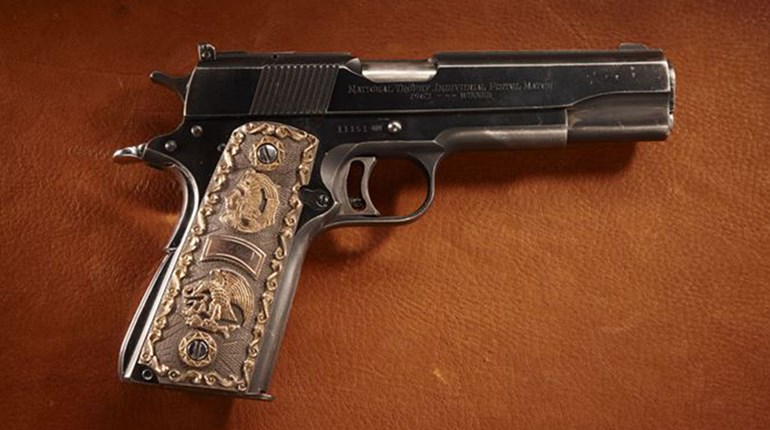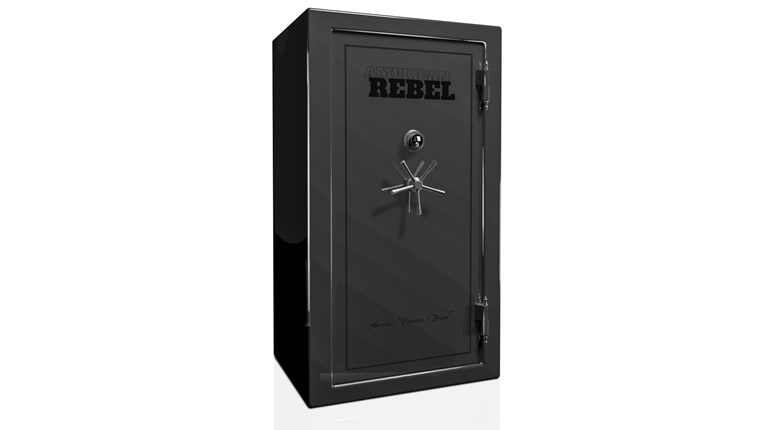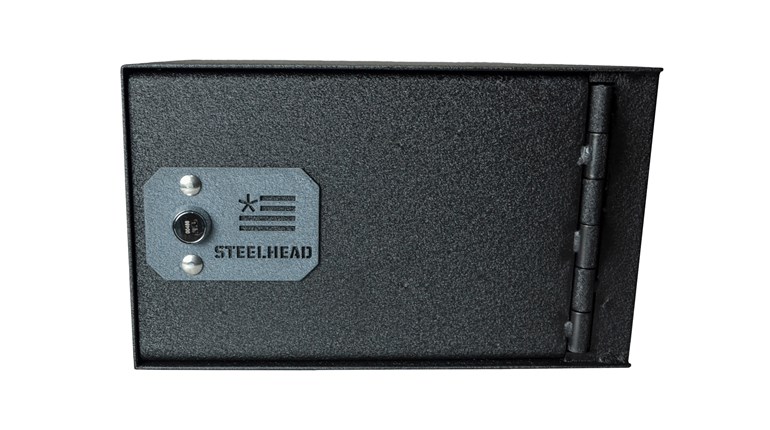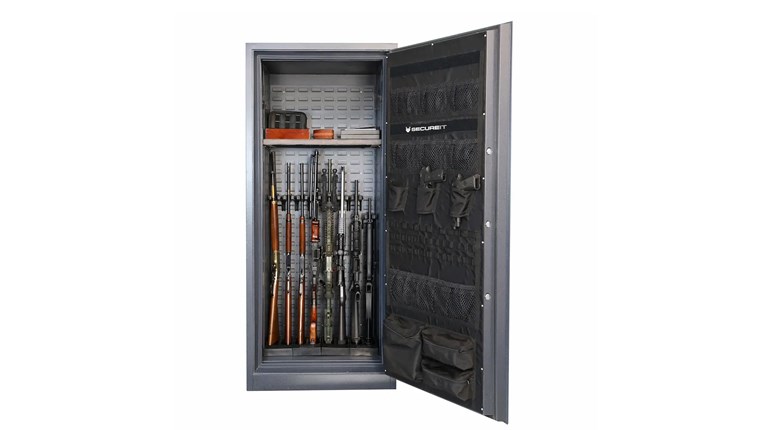
The Threat
Rather than simply preventing children or their friends from gaining access to your firearms, research for this article focused on fire protection and foiling a thief determined to steal them. If you’ve been seen with a large number of guns at the range or if your name is associated with a collection through a consignment sale at the local gun store, your first line of defense—anonymity, may have already been compromised. The front-line defense against theft is for people not to know about your guns at all. While it’s impractical to completely avoid word-of-mouth knowledge about your firearms, maintenance workers and guests don’t need to know about your gun vault. The mere knowledge of a safe may make your collection all the more attractive to a potential thief as a one-stop-shop for a lucrative haul. Even though some manufacturers go to lengths to make a vault attractive, consider camouflaging it. For example, place the safe inside a metal cabinet labeled “Paint Locker;” add a false wall to the room; or build a sliding façade to roll in front of the vault, made to look like storage boxes.
According to industry experts who contributed to this article, the greatest risk to the firearms owner is fire, followed secondly by the threat of an opportunistic thief. From Doug Tarter of Ft. Knox Safes, “The typical thief rarely targets a firearms vault armed with an acetylene torch or drill. It is more likely that they will discover the safe after breaking-in to your residence and use your tools to gain access, like the sledge hammer in the garage leaning against the safe.”
Editor's Note: We would be remiss not to include the latest and greatest in home gun concealment tech. Our friends at Tactical Walls are the masters of these products and have some great options, see this review at sister publication Shooting Illustrated.
Floor Attachment

Box First, Then the Hardware
Don’t be distracted by marketing emphasis on bolts, hinges and locks when the safe’s box structure could be nothing but a “soup can.” Shop first for a vault with walls and insulation designed to withstand a high temperature fire or a beating from an axe. If it meets these criteria, then continue with an examination of bolts, hinges and the locking mechanism. From Mike Baker of Cannon Safes: “How a door is constructed is a big factor in keeping it closed. You want a door that is rigid and has structural support around the edges so it doesn’t buckle under stress. When it comes to what is holding the door in, you can look at two things. First, how is the door jamb constructed? Some safe doors can be flexed with just your hands. Secondly, check to see what percentage of the door makes contact behind the jamb. A safe with 40, 1-inch bolts looks massive but only provides 40 inches of contact. A safe with five, 1-inch bolts with a jewelers lug (special hinge) that goes from top to bottom on the hinge side would provide 59 inches of support on a five foot tall safe.”
Which Lock?
Combination
Pros: Low maintenance; no batteries; more difficult to observe combination sequence.
Cons: Slow to operate; can be temperamental; unless a reputable brand is used, the combination may be easier to defeat; must have locksmith change combination for you.
Electronic
Pros: Easy to use; cost effective; flexible (high-end models can integrate with home security/surveillance system); more features (multiple user combinations and penalty lockouts); does not require a locksmith to change the combination. Ask the salesman which lock they selected for their personal safe. Several we spoke with use an electronic lock.
Cons: Require battery changes. If you frequently change and, as a result, forget the combination, a locksmith will have a hard time opening it. (Fingerprint wear on electronic locks is a myth. They actually use a non-wearing material.)
Biometric
Pros: Similar to electronic locks—speed, ease and flexibility; most allow for the storage of several fingerprints.
Cons: Not 100 percent reliable (if your finger is dirty, the lock may not work); expensive; still a developing technology, so not perfect.
Fire
The more likely threat to your firearm collection is a house fire. Even though you may take excellent care of your home, the neighbor’s fire or a nearby lightning strike can send burning embers onto your roof. And unless you have a special insurance rider, the loss could be expensive, to say nothing of irreplaceable heirloom pieces. Consequently, the lining becomes one of the most important practical considerations when shopping for a vault. The thickness and type of insulation, the existence of gaps in the lining and how the lining is attached to the safe walls are things to watch for, as well as the country of origin. Remember last year’s news about Chinese drywall and litigation from several U.S. states about sulfur and formaldehyde content? Hurricane Katrina emergency trailer homes that were later discovered to have been constructed with such drywall helped raise awareness of this ongoing problem. Shoppers should ask probing questions about the origin of a vault’s insulation.

Fire ratings are problematic for this industry, leaving it up to the consumer to dig for details. Some standards such as Underwriters Laboratory (UL) are intended for commercial structures rather than a home fire. This lack of a standard metric leaves room for well-intended manufacturers to create their own tests, making it difficult for consumers to come up with an apples-to-apples comparison. From Mike Baker of Cannon Safes: “This is a huge ‘buyer-beware.’ Even with the existence of a UL Security Label, most of the gun safe manufacturers do not follow such testing standards when it comes to fi re, if they test at all. A few come up with confusing comparisons to make you forget they have not been tested. A very few companies actually test at a third-party laboratory that scientifically studies behaviors of home fires and creates standards for testing.”
Confirming what the experts told us, our search for a Nationally Recognized Testing Laboratory for gun safe fire protection standards left us empty-handed. As an aside, a UL Security rating may be what’s required for a discount on your insurance premiums, but it has nothing to do with fi re protection. Check with your underwriter, as well as your tax preparer. As a security item, the safe may be an allowed write-off on your taxes.
Storage
From Jamey Skousen of Liberty Safes, “The number one complaint after they get their safe installed is: ‘I wish I would have bought a bigger one.’ It’s amazing how many of our customers tell us they ended up putting more stuff in their safe than they ever thought possible.” Like the size of our reloading bench or how many guns will fit inside our bullseye pistol box, allow for more space than you think you’ll need. You know best what will work for your collection, but plan for growth. The fireproof feature of your safe may have you storing documents and other valuables in what was originally intended for only guns. Consider drawers, door pouches and filing space in addition to the number of guns in your collection.
Corrosion Control
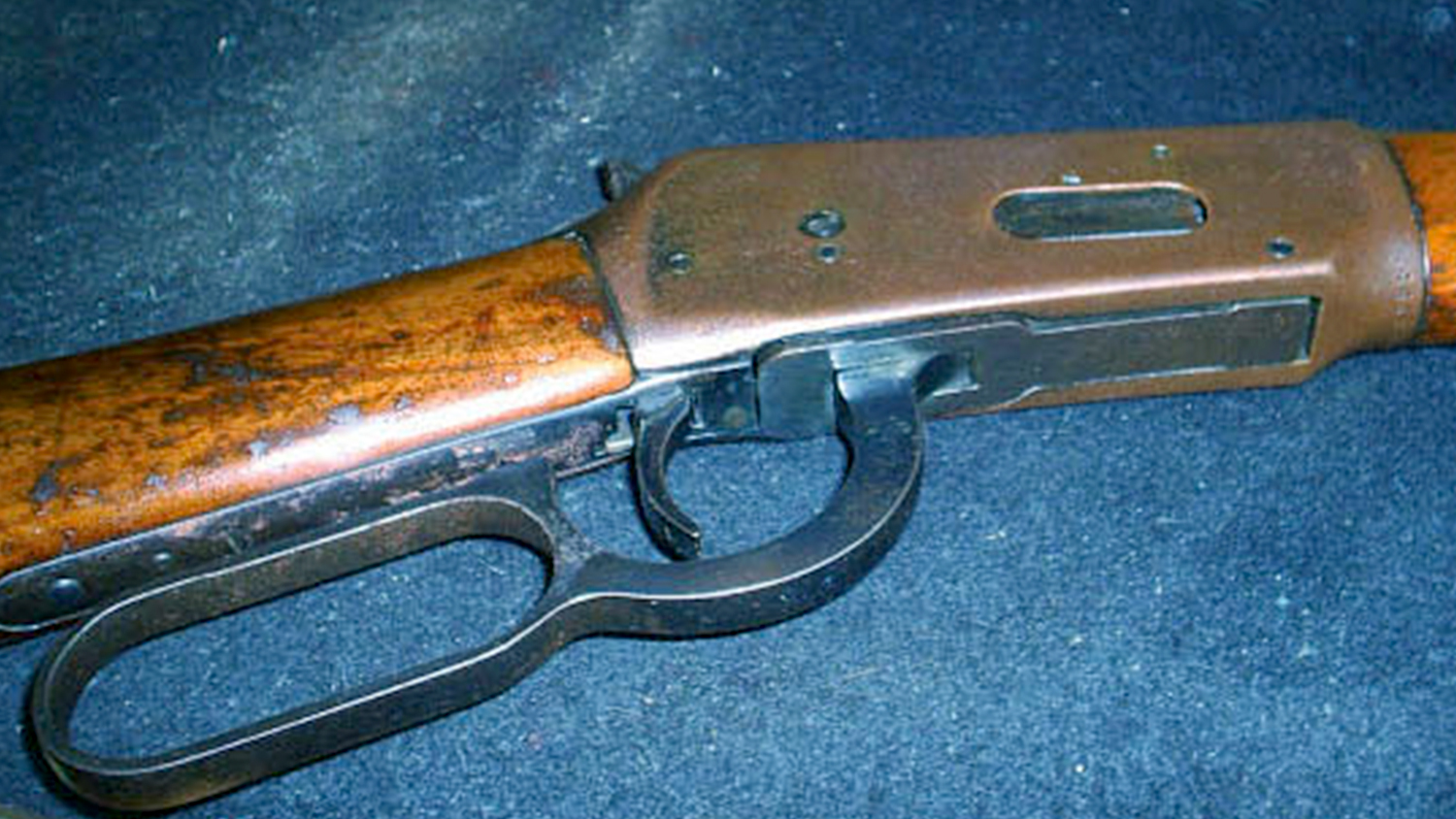
There are preservatives intended for long term gun storage including Breakfree’s Collector, MIL SPEC Cosmoline or, from the Marine Industry—BoeShield T-9. If you frequently remove, use and return guns to the safe, then products like VCI protection bags and Bore-Stores gun socks will reduce the chore of removing and re-applying storage lubricants.
Installation

Shopping Checklist
Here are a few items to add to your comparison checklist:
- Price: If you want to feel secure, you can get inexpensive safes on sale at the big box stores. If you prefer to invest in actual security, the cost of materials, lock and a quality box design mean that you should plan on a minimum price of about $1,200-$1,500.
- Pick the lock that suits your needs. Several of our experts use electronic locks on their personal safe.
- Dimensions that can accommodate future growth and frequent access to records and valuables.
- Verifiable fire-ratings and linings without gaps.
- Minimum of 10-11 gauge steel. (Economy safes often use 12-gauge.)
- Judge locking mechanisms by the percentage of contact area, rather than simply the number of bolts. If offered, “relockers” provide additional bolts that close during tampering.
- Climate control seals and electrical outlet provisions.
- External hinges for improved door swing and access. (Keep in mind that the bolts and relockers secure the door, in addition to the hinges.)
Some Choices (alphabetical)
Brown www.brownsafe.com
Browning www.browning.com
Cannon* www.cannonsafe.com
Champion www.championsafe.com
Ft. Knox* www.ftknox.com
Heritage www.heritagesafe.com
Liberty/Remington* www.libertysafe.com
Winchester www.granitesafe.com
Zanotti www.zanottiarmor.com
* Contributed to this article.













